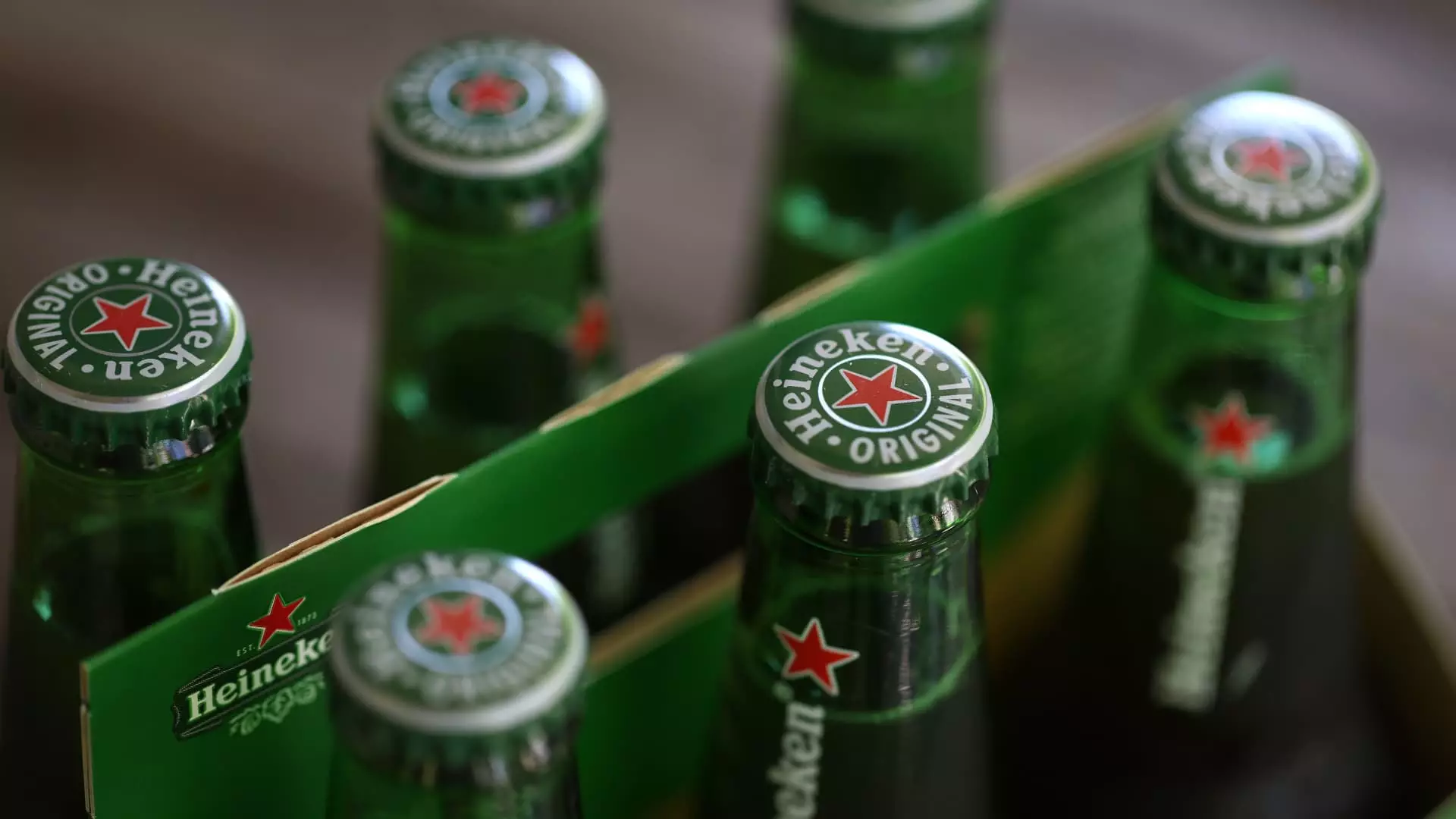Heineken shares plunged nearly 7% on Monday as the brewing giant’s first-half profit growth fell short of analysts’ predictions. The company’s stock took a hit, dropping by 7.9% during trading hours in London. Operating profit showed organic growth of 12.5%, missing the company’s consensus forecast of 13.2%. Additionally, beer sales, which were anticipated to grow by 3.4%, only rose by 2.1%.
One of the significant factors contributing to Heineken’s disappointing performance was a non-cash impairment of 874 million euros on its investment in CR Beer, a Chinese brewing firm. The write-down was a consequence of CR Beer’s declining share price amidst concerns about consumer demand in China, rather than operational performance. Heineken reported a net loss of 95 million euros due to this impairment.
Heineken’s CEO, Dolf van den Brink, expressed satisfaction with the company’s overall performance in the first half. He highlighted that the volume growth was well-balanced and broad-based across their global footprint, with a 5% increase in premium products. Despite this positive outlook, the company revised its operating profit organic growth forecast for the year to a range between 4% to 8%, down from the previous guidance of low to high single-digit growth.
Market analysts pointed out that Heineken’s results fell short of expectations, indicating a disparity between the company’s messaging and what analysts anticipated. The most significant miss was in Europe, where profit growth was just 0.2% compared to an expectation of 15.1%. This shortfall was primarily attributed to increased promotional spending in a highly competitive market.
Despite the challenges faced in traditional beer sales, Heineken reported “consolidated leadership” in low and no-alcohol beer sales. The company’s no-alcohol beer, Heineken 0.0, saw a remarkable growth of 14%. The growing trend of low and no-alcohol products in the beverage industry has become increasingly important for Heineken, with CEO van den Brink emphasizing its significance to the company’s future growth strategy.
Van den Brink also mentioned that input cost pressures on the company had significantly decreased, particularly in Europe and the Americas. Lower input costs allowed Heineken to adjust pricing more modestly compared to the previous year, which aimed to balance revenue growth between volume and pricing strategies.
Overall, Heineken’s unexpected decline in profit growth reflects the challenges faced by the brewing industry, especially in the competitive European market. The company’s focus on diversifying its product portfolio to include low and no-alcohol options demonstrates its adaptability to changing consumer preferences. Moving forward, Heineken will need to address the discrepancies between its forecasts and actual results to regain investor confidence and sustain long-term growth.

Leave a Reply